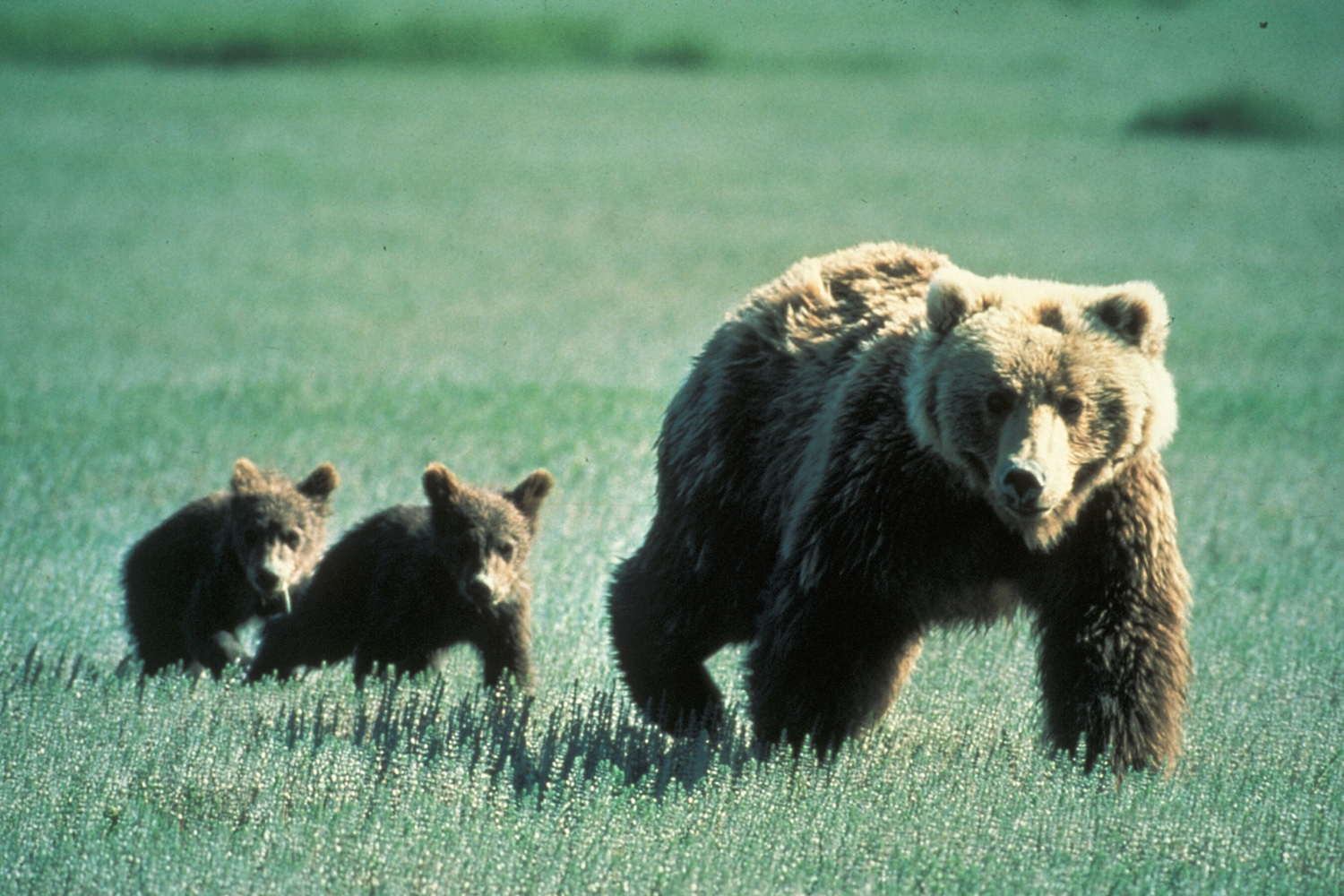 |
| Grizzly bear family |
A pair of conservation groups, the Vital Ground Foundation and Yellowstone to Yukon Conservation Initiative, recently purchased an undeveloped subdivision of land near the town of Troy in northwest Montana where the Kootenay and Yaak rivers meet. The land serves as an important corridor to provide habitat linkage between isolated grizzly bear populations in the Cabinet-Yaak ecosystem and would alleviate the bottleneck for bears roaming the Kootenay Valley. The purchase has added to the 2017 procurement of seven other adjoining areas and has added to what the groups call the "White River Project" to 42.5 preserved acres of prime wildlife habitat moving between the Cabinet and Purcell mountains. According to Kim Trotter, U.S program director of Yellowstone to Yukon Conservation Initiative, the purchase is "a win for bears, other wildlife, and people." Wildlife biologists from several commissions have long suggested that the Kootenay and Yaak rivers are a critical zone for habitat linkage, and new development could disintegrate the corridor. The Kootenay Valley separates the Cabinet and Purcell mountain ranges, splitting the Cabinet-Yaak area's improving grizzly population into two segregated subgroups, with an estimated 25 bears per subgroup. The Wild River Project also plans to revitalize a quarter-mile of riverbank and neighboring wetland along the Kootenay River, reforming habitat for the endangered white sturgeon and bull trout. Biologists have recorded more than thirty other species of concern near the project site, such as the Canada lynx, fisher, and wolverine.
 |
| View of the Yaak River |
I feel very proud and happy that there is a conservation project being conducted to ensure the well-being of both grizzly bears and other wildlife in the Montana-Canada area. I believe it is very crucial that there needs to be an expansion in the grizzly habitat to prevent any bottleneck in the bear populations. In order to allow the habitat expansion, purchasing lands that serve as vital corridors are necessary to enable the bears' movement from one area to another. I also believe that such lots should never, under any circumstances, be subjected to land development or any other form of anthropogenic pressure that could jeopardize the bears. This is especially true with the issue of grizzly bears dispersing beyond Yellowstone National Park. These animals should never be seen as prey for human beings just because they venture outside a protected area. We must not forget that grizzly bears once ranged throughout the western half of North America before the establishment of various national parks like Yellowstone, Grand Teton, and Glacier. So when these bears venture outside these parks, it is extremely important to identify the areas they are using to go from one place to another and proclaim them as wildlife corridors. The bears and other wildlife documented in these natural corridors should be protected no matter what.
View article here
No comments:
Post a Comment